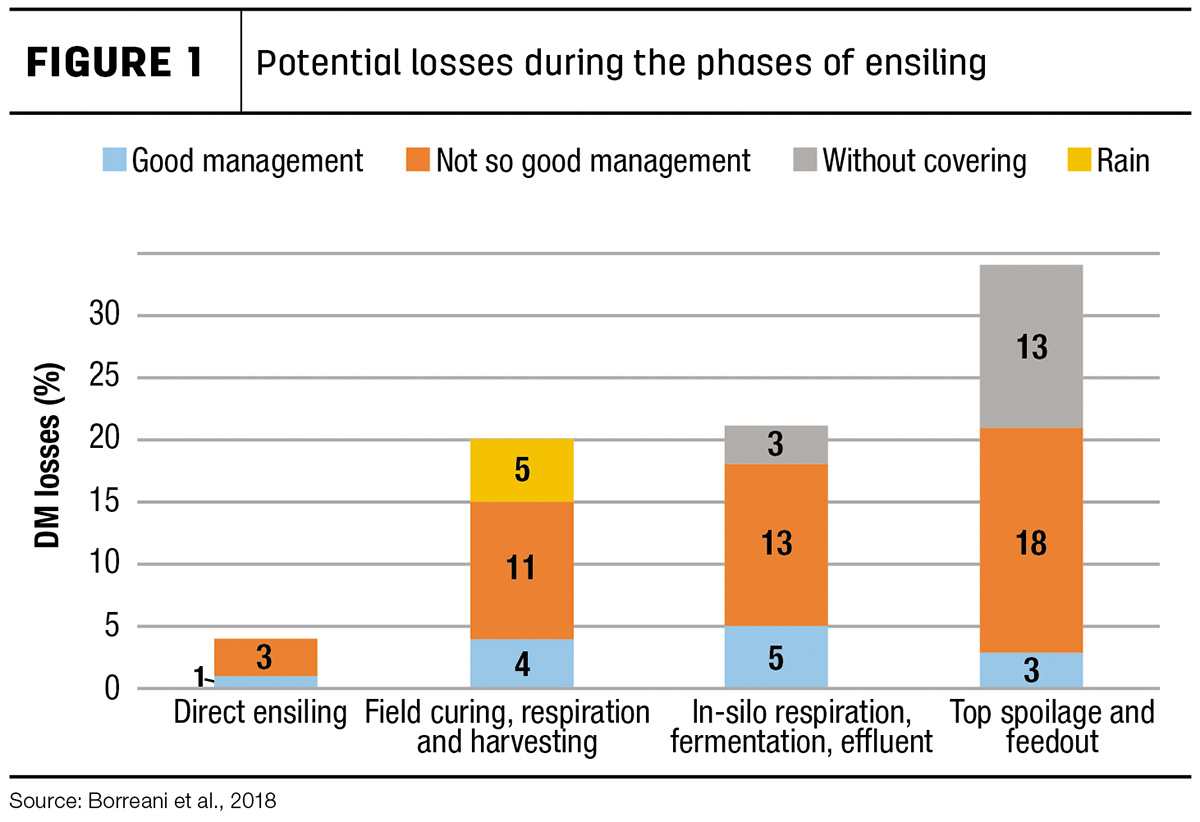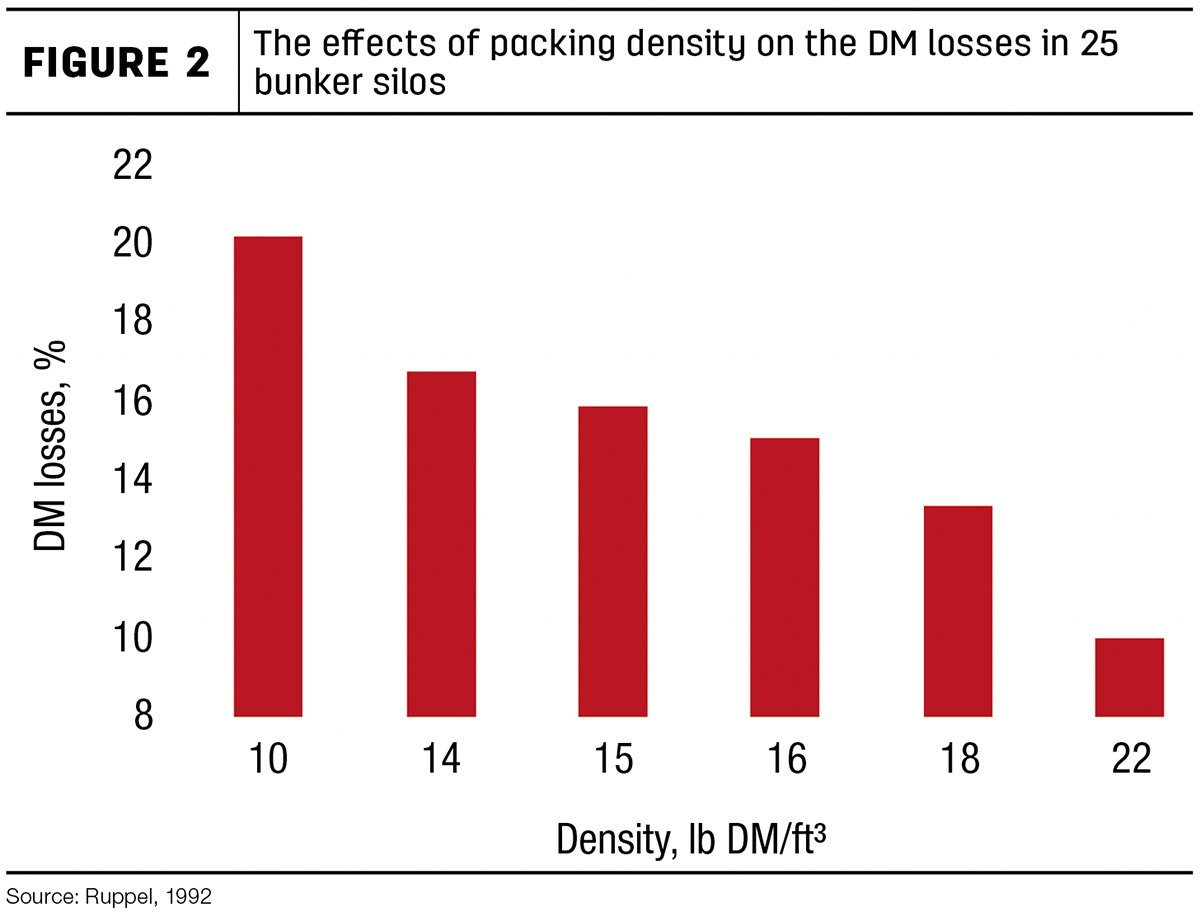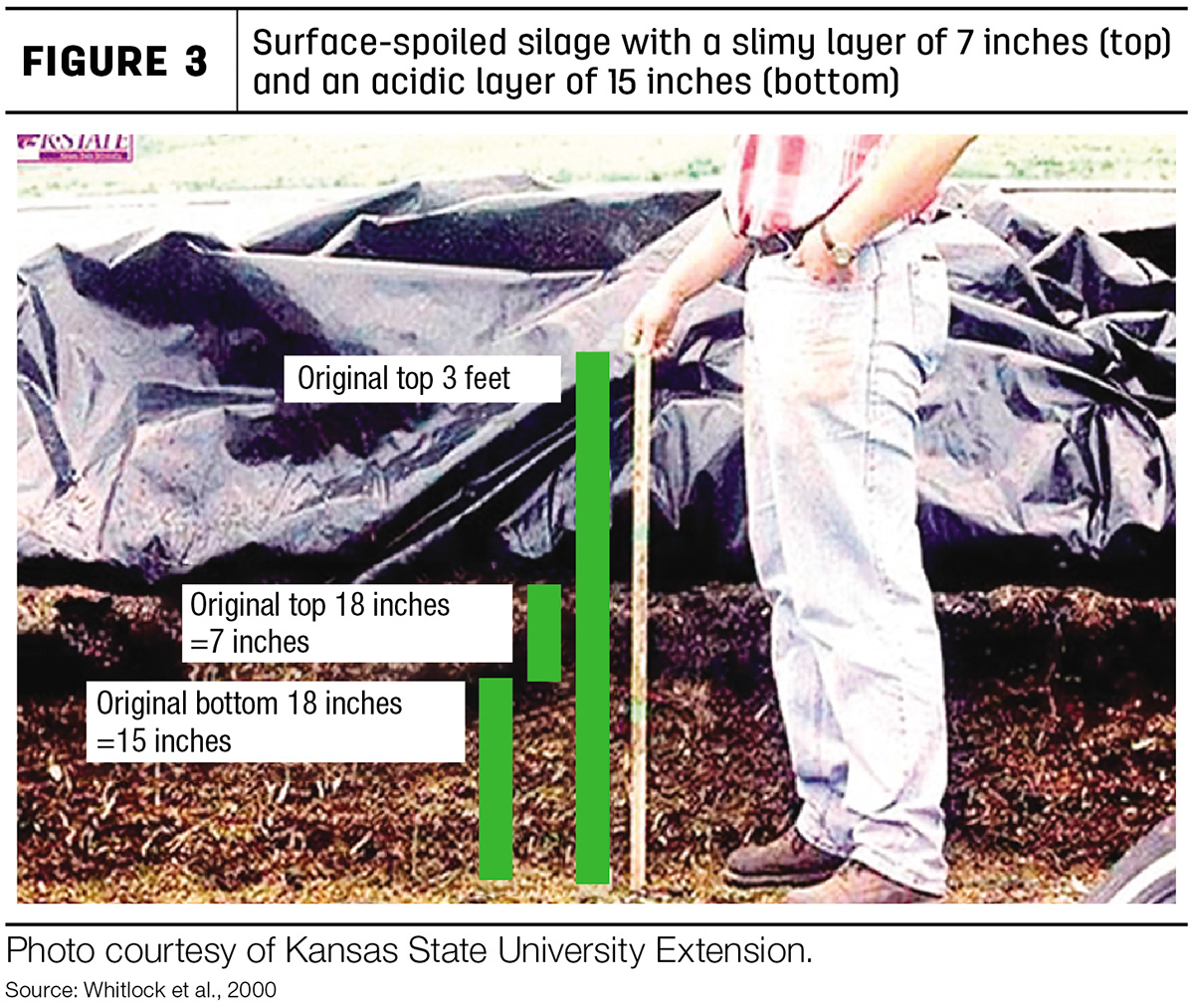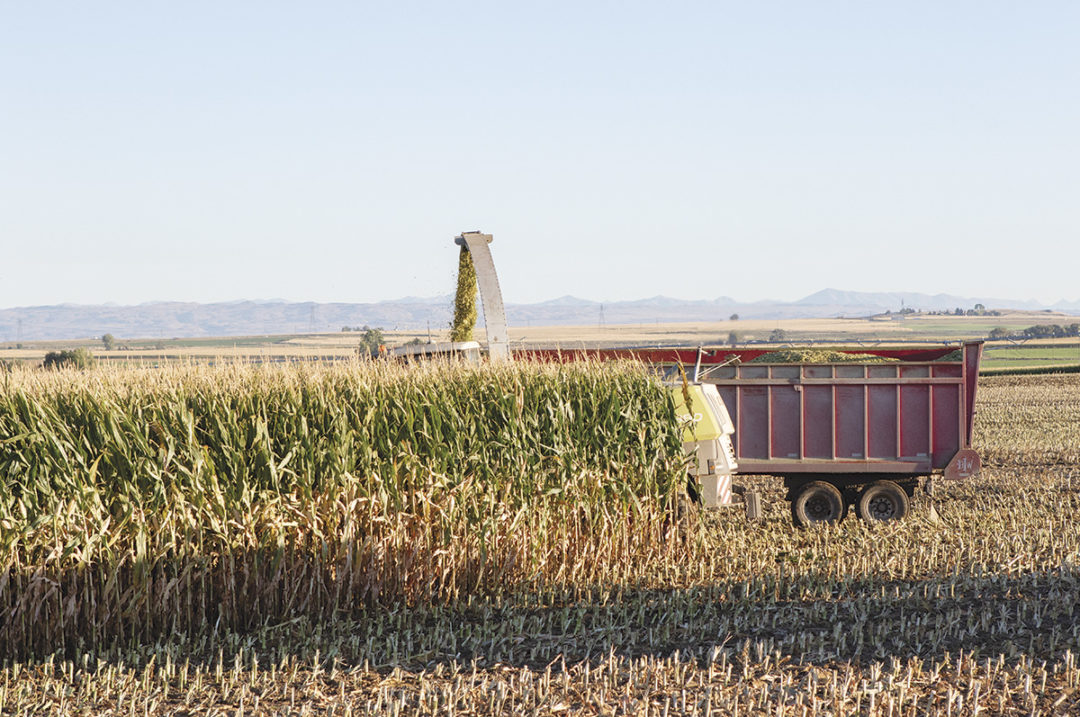Better feed means better outcomes for your cattle, and silage is an important part of the ration. Properly ensiled forages can be stored for extended periods of time and support the performance and health of your herd. Alternatively, you could be dealing with spoilage, plummeting palatability and a rising feed bill.
To get the most out of the ensiling process, there are two goals you want to keep top of mind: (1) retaining as much as possible of the original nutrients and dry matter (DM) through an efficient lactic acid fermentation, and (2) having a stable product through feedout. The prerequisites for a successful ensiling include:
- Proper forage moisture range – The moisture content of your crop matters. Ensiling wet forages results in seepage losses and more extensive fermentation because the microorganisms remain active longer. It also increases the chances of clostridial activity. In contrast, dry forages are harder to pack, which can lead to molding and heating.
- Anaerobic conditions – Excess oxygen in forage delays fermentation. Trapped air allows for aerobic microbial activity and prolonged plant respiration, which increases losses and creates heat. Valuable sugars are utilized and converted to water and carbon dioxide in this process; this lost carbon represents 2% to 4% of DM losses. General guidelines for silage packing densities are at least 15 pounds of DM per cubic foot or 44 pounds of fresh matter (FM) per cubic foot. Silage porosity, defined as the volume of gas-filled voids as a fraction of total silage volume, should be less than 0.4.
- The right microbes – Inoculants contain strains of lactic acid bacteria that improve the fermentation by efficiently preserving the ensiled crop and inhibiting naturally occurring damaging microbes, such as spoilage yeasts, molds and clostridia. Therefore, by adding beneficial microbes, inoculation will always improve this process, maximizing DM and nutrient recoveries and enhancing the hygienic characteristics of the silage.
- Enough sugars for the fermentation – Using a microbial inoculant in a forage crop that doesn’t contain enough sugars for fermentation is a waste of money – it's like having a sports car and no fuel in the tank. That’s because soluble sugars are the preferred food source for the lactic acid bacteria to produce the preserving organic acids. Under these circumstances, enzymes added in the formulation to break down complex carbohydrates, or the addition of sugar sources such as molasses, are helpful at the time of ensiling (Figure 1).

Opportunities to improve return on investment (ROI)
1. Packing
Packing is a simple yet critical step in the production of high-quality silage. If packing isn’t done correctly, there will inevitably be more losses. Your silage should be packed immediately! Well-packed silage ensures that anaerobic conditions are established, allowing for the desired fermentation to take place. The packing density of silage can be influenced by several factors, including the moisture content of the forage, the particle size (excluding bales) and the degree of packing. Missing the mark on packing density leads to waste and increased operating costs.
Cornell University researchers studied the relationship between packing density and DM loss percentage and reported a near-linear relationship between the two. They found savings corresponding to $750 per 1,000 tons of silage per increase of 1 pound of DM per cubic foot – assuming silage is valued at $75 per ton. Along with larger profits, increasing the packing density allows for more tonnage storage in the same place or volume (Figure 2).

2. Kernel processing
Kernel processing plays a critical role in the starch digestibility of corn silage. To achieve the best kernel breakdown, you should monitor plant maturity, use proper roll gap and theoretical length of cut (TLOC) settings, maintain the processor and keep a close eye on kernel breakage during harvest.
Although there is more data for dairy cattle diets validating the benefits of kernel processing, this practice should still be considered in situations where higher amounts of corn silage are fed to beef cattle, such as in background programs. Early research from Kansas State University (K-State) showed greater average daily gains and a 7.1% improvement in feed efficiency from crossbred steers and heifers that were fed processed (pre- and post-ensiling) corn silage compared to unprocessed. More recent data from the University of Nebraska also found a trend in improved feed efficiency for cattle that were offered kernel-processed corn silage.
3. Silo covering
Once the silage is packed, it should be covered and sealed to prevent oxygen from spoiling the feed. A high-quality plastic cover should be used, weighted down and sealed around the edges. When not adequately covered, excessive DM and nutrient losses, moldy feed and other issues can be expected. Considering DM losses alone, research from K-State showed that corn, sorghum and alfalfa silages that were covered had 83% of DM recovery in the top 10-inch layers, while uncovered silages averaged just 21%. Furthermore, in a similar study, different amounts of the spoiled portion (slimy, top black layer) were fed to steers, and only 5.4% of that spoiled silage in the diet (DM basis) was enough to depress intake (1.3 pounds of DM per head per day) and negatively affect fiber digestibility (7.2 percentile points) (Figure 3).

An insufficient cover can also let rainwater seep in, which transports oxygen into the silage, deteriorating the feed even further. These effluent and gaseous DM losses are invisible to producers, so you may not even realize the true extent of your losses. The lesson here? The value of silage saved is far greater than the cost of covering your forage properly.
4. Inoculants
Aiming for an efficient fermentation can address several challenges by quickly achieving a low, stable pH. When undesirable organisms are stifled, they can no longer eat up your livestock’s valuable nutrients. Undesirable bacteria that can wreak havoc, such as clostridia and enterobacteria, become overwhelmed. Specific species of lactic acid bacteria can address more significant challenges, such as feedout spoilage losses due to unstable silage and ensiling forage crops that were grown under suboptimal conditions.
Farm-scale research from the University of Florida showed that corn silage inoculated with a combination of Pediococcus pentosaceus 12455 and Lactobacillus buchneri 40788 had 4.4% less feedout loss compared to untreated silage. In addition to the extra loss, replacing it per 1,000 tons of corn silage (DM basis) would require 40.2 tons of 86% DM shelled corn, based on total digestible nutrients (TDN) equivalence – a double whammy! Additionally, that study showed that inoculated silage had four times lower crude protein losses and three times lower gross energy losses than untreated, which more than supports a positive ROI.
An internal survey with 1,200 producers (beef and dairy, 50% each) showed that 44% of them witness or expect around 20% of losses in their corn silages. There’s no reason to give up the feed you’re paying for when there are so many ways to control its quality. With the ample amounts of time and money invested in seed genetics, growing and harvesting of plants, thorough plans need to be made before ensiling crops. Paying attention to details and following the recommended management practices for all four phases of ensiling (aerobic, fermentation, storage and feedout) are also vital to retain the majority of the plant’s original nutrients and DM.
Lastly, the introduction of an inoculant can set your silage up for success, making sure overall losses are minimized while maintaining feed efficiency and keeping your animals and bottom line healthy. Because at the end of the day, profitable ROI depends on proper ensilage, and all the steps are important. Not to mention, when your silage is clean, it increases palatability, ensuring your cattle want to eat it, helping sustain dry matter intake (DMI) and boost animal performance.









